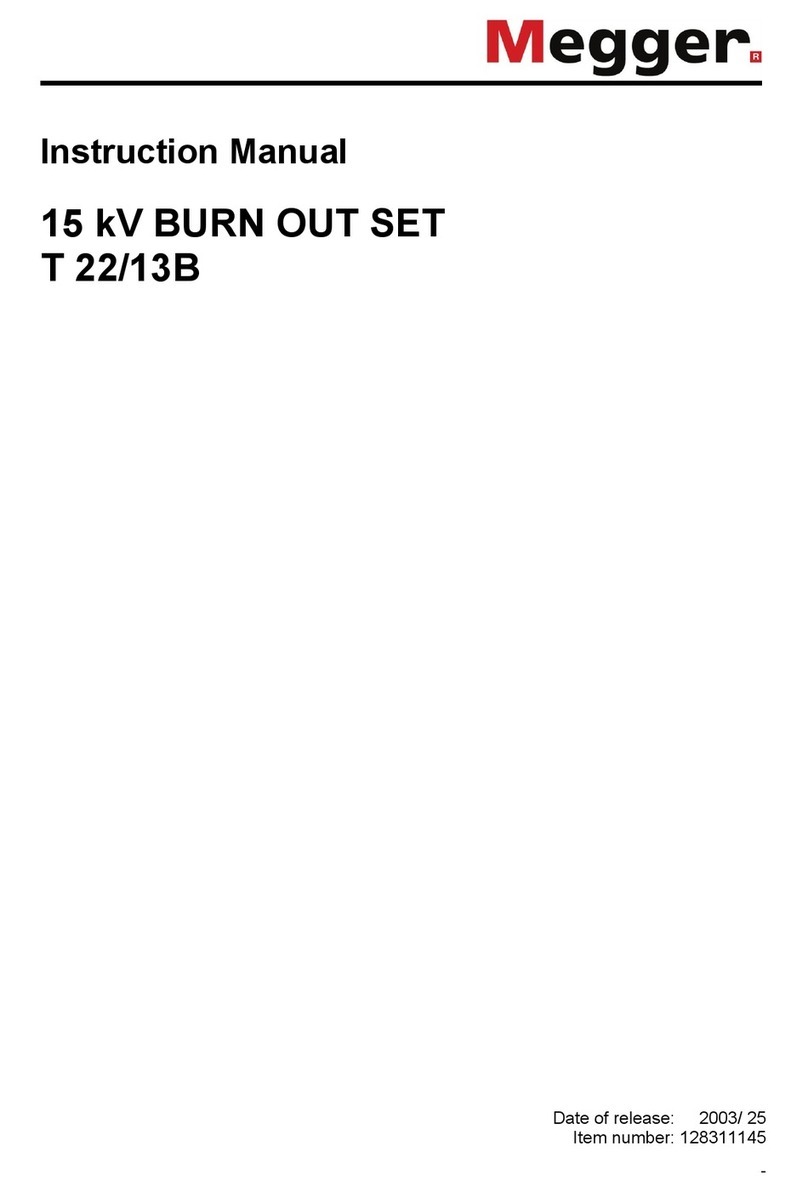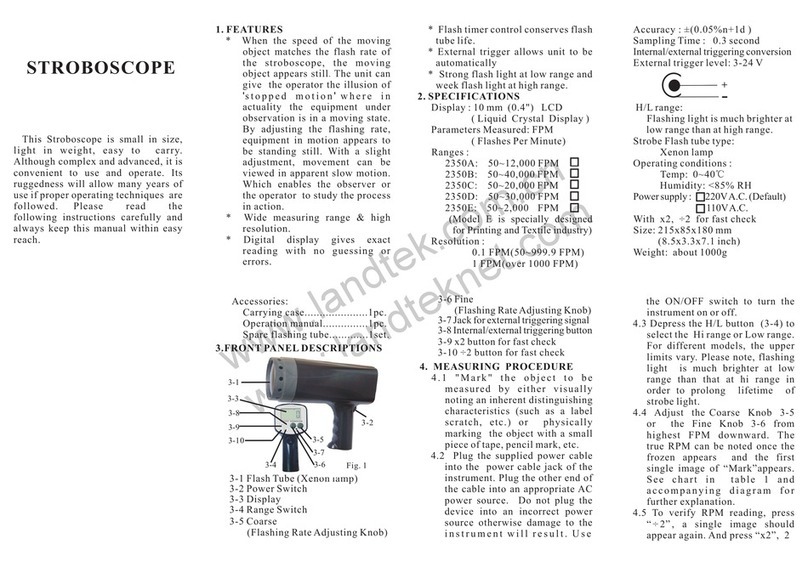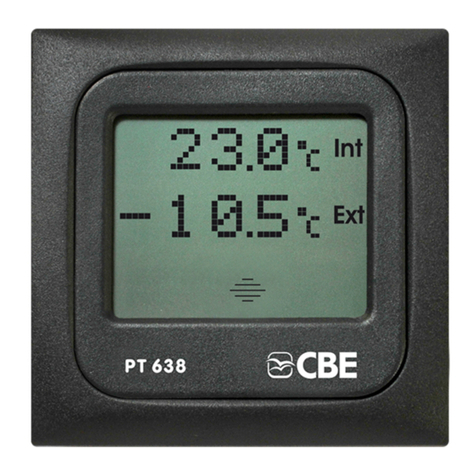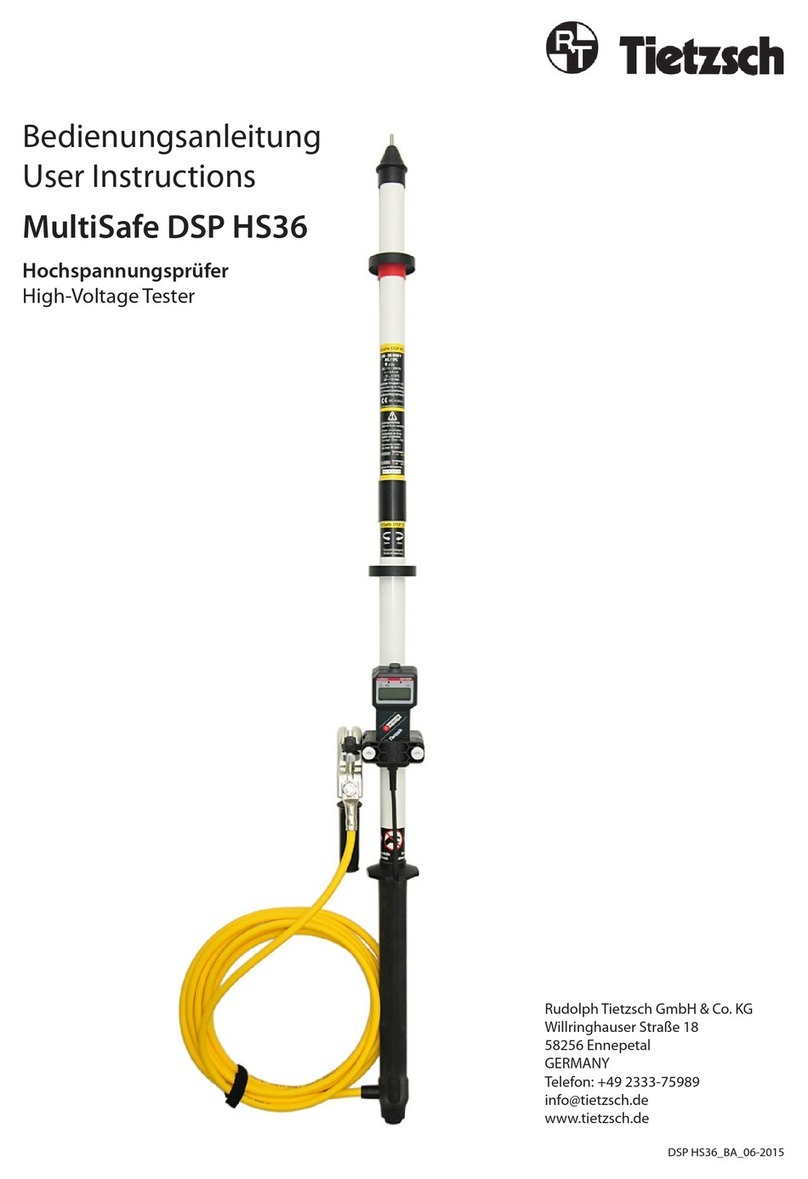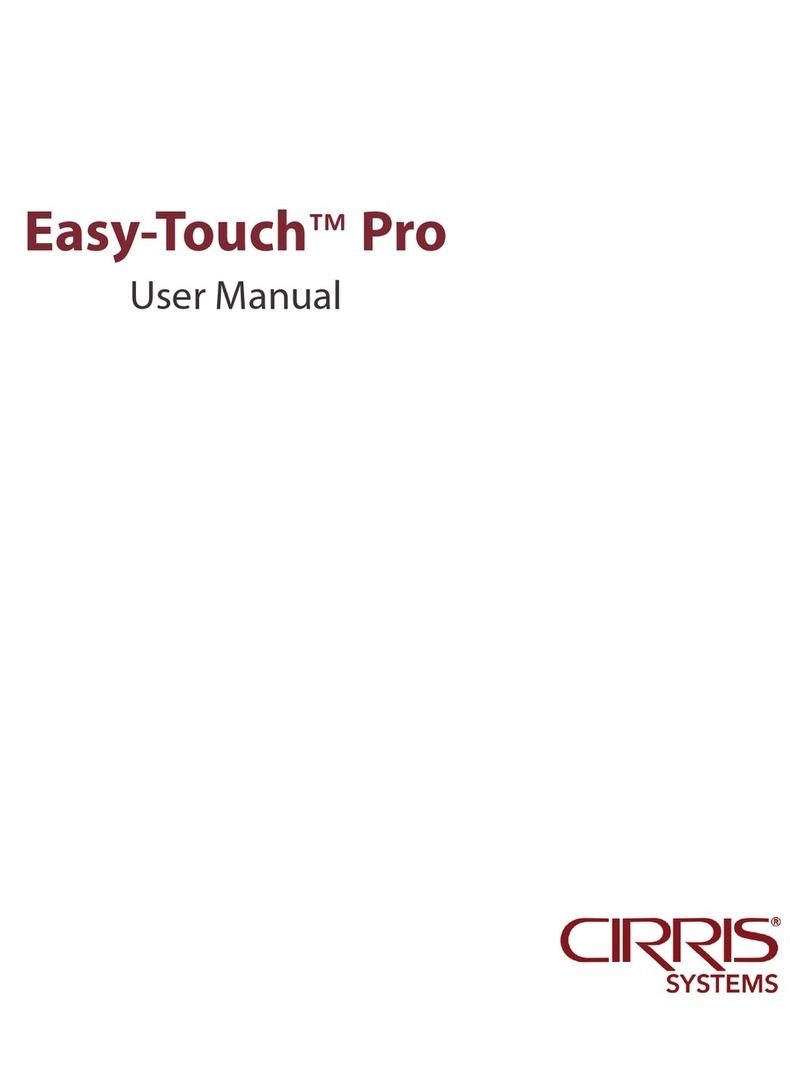Alldaq ADQ-51 User manual

Manual
Beta Rev. 1.0 EN
ADQ-51
USB-Box with 8 isolated digital inputs
and 8 isolated digital outputs
ADQ-51

2
Manual ADQ-51 Rev. 1.0
Imprint
Manual ADQ-51
Rev. 1.0
Datum: 28.04.2021
Manufacturer and support
ALLNET® and ALLDAQ® are registered trademarks of ALLNET® GmbH Computersysteme.
For questions, problems and product information please contact the manufacturer directly:
ALLNET® GmbH Computersysteme
Division ALLDAQ
Maistrasse 2
D-82110 Germering
Support
Phone: +49 (0)89 894 222 – 74
Fax: +49 (0)89 894 222 – 33
Internet: www.alldaq.com/support
© Copyright 2020 ALLNET GmbH Computersysteme. All rights reserved.
All information contained in this manual has been compiled with the greatest care and to the best of
our knowledge. Nevertheless, errors cannot be completely ruled out. Specications and contents of this
manual are subject to change without notice.
We are always grateful for notication of any errors.
Mentioned trademarks are registered trademarks of the respective companies.

3
Manual ADQ-51 Rev. 1.0
Content
1. Introduction ��������������������������������������������������������� 5
1.1 Scope of delivery �������������������������������������������������������� 5
1.2 Safety instructions ������������������������������������������������������� 6
1.3 Installation and assembly site ��������������������������������������������� 7
1.4 Brief description��������������������������������������������������������� 7
1.5 System requirements ����������������������������������������������������� 8
1.5.1 Hardware ����������������������������������������������������������� 8
1.5.2 Software ����������������������������������������������������������� 8
2. Start of operation ���������������������������������������������������� 9
2.1 Connecting the box ������������������������������������������������������ 9
2.2 Software installation ���������������������������������������������������� 10
2.2.1 Installation on Windows ��������������������������������������������� 10
2.2.2 Installation on Linux������������������������������������������������� 10
2.3 Testing program �������������������������������������������������������� 10
3. Function groups ����������������������������������������������������� 11
3.1 Block diagram���������������������������������������������������������� 11
3.2 LED display status ������������������������������������������������������ 11
3.3 Isolated digital inputs ��������������������������������������������������� 12
3.3.1 Digital input lter ��������������������������������������������������� 12
3.3.2 Wiring ������������������������������������������������������������ 12
3.3.3 Programming������������������������������������������������������� 13
3.3.3.1 Read in single value ���������������������������������������������� 13
3.4 Isolated digital outputs �������������������������������������������������� 14
3.4.1 Wiring ������������������������������������������������������������ 14
3.4.2 Programming������������������������������������������������������� 16
3.4.2.1 Single value output ���������������������������������������������� 16
3.4.2.2 Overloading the outputs ������������������������������������������ 16

4
Manual ADQ-51 Rev. 1.0
4. Annex ������������������������������������������������������������� 17
4.1 Specications ���������������������������������������������������������� 17
4.2 Pin assignments �������������������������������������������������������� 20
4.2.1 ADQ-51������������������������������������������������������������ 20
4.2.1.1 18-pin type Phoenix contact ��������������������������������������� 20
4.3 Manufacturer and support ����������������������������������������������� 21
4.4 Important notes �������������������������������������������������������� 21
4.4.1 Packaging ordinance ������������������������������������������������ 21
4.4.2 Recycling advice and RoHS conformity ��������������������������������� 21
4.4.3 CE identication ���������������������������������������������������� 21
4.4.4 Warranty ���������������������������������������������������������� 22

Introduction 5
Manual ADQ-51 Rev. 1.0 Introduction
1. Introduction
Please check the packaging and the contents for damage and completeness before commissio-
ning. If any defects should occur, please inform us immediately.
• Does anything on the packaging indicate that something has been damaged during trans-
port?
• Can traces of use be seen on the device?
Under no circumstances may you put the device into operation if it is damaged. In case of doubt,
please contact our technical customer service.
Please read this manual carefully before installing the device!
1.1 Scope of delivery
• ALLDAQ ADQ-51
• 18-pin connection plug Phoenix DFMC 1.5/9-ST-3.5-LR (1790551)
• USB-Cable

6 Introduction
Introduction Manual ADQ-51 Rev. 1.0
1.2 Safety instructions
Be sure to observe the following instructions:
• Make sure that the box is very well ventilated, as the output drivers can become up to
100 °C hot at full load.
• Avoid touching cables and connectors etc. inside the PC with the card.
• Never expose the device to direct sunlight during operation.
• Never operate the device near heat sources.
• Protect the device from moisture, dust, liquids and vapours.
• Do not use the device in damp rooms and under no circumstances in potentially explosive
areas.
• Repairs may only be carried out by trained, authorised personnel.
• When commissioning the instrument, please observe the installation regulations and all
relevant standards (including VDE standards), especially when operating with voltages
higher than 42 V.
• We recommend to always connect unused inputs to the corresponding reference ground to
avoid crosstalk between the input channels.
• Always disconnect your eld wiring from the voltage source before you make or break cable
connections to the card.
• Make sure that no static discharge can occur through the device when handling the card.
Follow standard ESD protection measures.
• Never connect the devices to live parts, especially not to mains voltage.
• Precautions to avoid unpredictable misuse must be taken by the user.
ALLNET® GmbH Computersysteme is not liable for improper use and resulting damage.

Introduction 7
Manual ADQ-51 Rev. 1.0 Introduction
1.3 Installation and assembly site
The ADQ-51 is a digital I/O box designed for industrial use.
The box may only be used in dry rooms. Ensure adequate ventilation and that the connecting
cables are securely seated.
1.4 Brief description
The ADQ-51 digital I/O box is suitable for use in industrial automation and control technology.
The galvanic isolation of 500 VACeff. between the eld wiring and the PC effectively suppresses
interference. To protect against contact bounce, this box also offers the option of programming
a digital lter for each input port.
The ADQ-51 has 8 bit isolated digital inputs. These isolated inputs have a Schmitt trigger cha-
racteristic according to IEC 61131-2 (Type 1) and are designed for a max. input voltage of 35 V.
The digital inputs are equipped with a digital lter.
The ADQ-51 also has 8 bit isolated digital outputs. Each output can drive up to 0.6A. To increase
the output current a parallel connection of several outputs is possible, so that for many appli-
cations no external driver stage is necessary. To supply the outputs, an external voltage source
in the 16..35 V range with sufcient power must be provided. The output drivers are equipped
with thermal overload protection, current limitation, short-circuit protection and undervoltage
monitoring.

8 Introduction
Introduction Manual ADQ-51 Rev. 1.0
1.5 System reqirements
1.5.1 Hardware
• PC system with a current Intel® or compatible processor based on x86(-64) architecture
• A free USB-slot (ADQ-51)
1.5.2 Software
On the ALLDAQ homepage you will nd drivers for Windows Vista SP2 and higher (32 and 64
bit) as well as a function library (API) with code examples for high-level language program-
ming. Please note the notes in the corresponding help le adqSDK.chm.
Details about programming can also be found in the help le adqDriver.chm, which you can
access via the „ALLDAQ-Manager“ in the info area of the taskbar (usually bottom right) or the
Windows start menu.

Start of operation 9
Manual ADQ-51 Rev. 1.0 Start of operation
2. Start of operation
2.1 Connecting the box
Please read the manual of your computer regarding the installation of additional hardware
components before installing the box.
The box should be handled with care to ensure that the device is not damaged by electrostatic
discharge (ESD), mechanical stress or unauthorized surges. In addition, precautions must be
taken to avoid electric shock. Follow standard ESD protection measures.
Fig. 1: Side views of the ADQ-51

10 Start of operation
Start of operation Manual ADQ-51 Rev. 1.0
2.2 Software installation
2.2.1 Installation on Windows
The following basic procedure applies:
Download the latest driver for your system from alldaq.com/downloads. The installation is
started with a double click.
After successful installation you will nd the „ALLDAQ-Manager“ in the info area of the taskbar
(usually at the bottom right) or in the Windows start menu. The ALLDAQ Manager gives you
access to the Software Developer Kit (SDK), various utility programs and help les.
2.2.2 Installation on Linux
Please ask us about the availability!
2.3 Testing program
Simple test programs can be found in the ALLDAQ SDK. There is a subfolder „Applications“ with
test programs for your ALLDAQ hardware for the respective programming language.
You can use the ALLDAQ Manager to query various information about the installed ALLDAQ
hardware.

Function groups 11
Manual ADQ-51 Rev. 1.0 Function groups
3. Function groups
3.1 Block diagram
Block diagram ADQ-51
ADQ-51
DO_7…0
GND_EXT
DI_7…0
GND_EXT
UEXT
UEXT
Phoenix DFMC 1.5/9-ST-3.5-LR
LEDs
Temperature monitoring
Current limitation per channel
Isolated up to 500 VAC
Digital
8 bit output port
8 bit Input port
8 bit digital output
8 bit digital input
Control logic
USB2.0 controller
USB2.0 Fullspeed
RDY
PWR
ACT
ERR
Fig. 2: Block diagram ADQ-51
• 8 isolated digital inputs (1 x 8 bit ports)
• 8 isolated digital outputs (1 x 8 bit ports)
3.2 LED display status
LED Meaning
RDY ON = USB-Port active
PWR USB 5V
ACT Blinking = Active Data Transfer
ERR ON = UEXT not connected / OFF = UEXT OK

12 Function groups
Function groups Manual ADQ-51 Rev. 1.0
3.3 Isolated digital inputs
The ADQ-51 has 1 isolated digital input port with 8 bits. The isolated inputs have a Schmitt
trigger characteristic according to IEC 61131-2 (Type 1) and are designed for a maximum input
voltage of 35 V. The ADQ-51 has 1 isolated digital input port with 8 bits. All isolated inputs are
equipped with status LEDs (not visible in the housing). The insulation voltage against PC ground
is 500 VACeff according to EN60664-1 or UL1577.
3.3.1 Digital input lter
You can program a digital lter for each input port to prevent unwanted contact bounce effects.
Choose between the following values:
10 ms (N= 1248) / 3.2 ms (N= 400) / 1.0ms (N = 125) / 10 µs (Bypass). The scan frequency is
100 kHz (typ.).
0
1
2
N-1
N-2
N-3
Scan frequenc
y
Input DI_x
F
ilter outlet
F
ilter status
Signal is 1
Signal is 0
Filter time
Signal is
unchanged
Fig. 3: Digital input lter
3.3.2 Wiring
The isolated inputs have a Schmitt trigger characteristic in accordance with IEC 61131-2 (type 1)
and are designed for the UIH input high level of typ. 24 V, which is common in control techno-
logy. Observe the following conditions:
• Threshold voltage L ¨H: > 15 V @ UEXT = 24 V
• Threshold voltage H ¨L: < 11 V @ UEXT = 24 V
• Hysteresis: typ. 1V
The external supply UEXT can be in the range 16..35 V, while we recommend 24 V. Please note
that a ground connection must always be established from the external circuit to the reference
ground of the isolated digital inputs (GND). The digital input part and the digital output part
use a common GND.

Function groups 13
Manual ADQ-51 Rev. 1.0 Function groups
Digital lter
Fig. 4: Wiring of the isolated digital inputs
3.3.3 Programming
All input ports (DI_x) can be programmed independently of each other. The port direction is
determined by the hardware.
One digital lter can be programmed per port: 10 ms / 3.2 ms / 1 ms / 10 µs (bypass).
3.3.3.1 Read in single value
In this operating mode you can read a digital value in the respective port width.
The procedure is described in the online help.

14 Function groups
Function groups Manual ADQ-51 Rev. 1.0
3.4 Isolated digital outputs
The ADQ-51 has an isolated digital output port with 8 bits. The high-path outputs are equipped
with a power FET that switches up to 0.6 A per channel. The isolation voltage against PC ground
is 500 VACeff.
3.4.1 Wiring
The outputs of the ADQ-51 are designed for a high level of 24 V (UOH = 16..35 V) for industrial
applications. The max. output current IO is 0.6 A per channel. To increase the total output cur-
rent, any number of outputs can be connected in parallel. A ground reference to the external
output circuitry must be established via GND. The digital input and output parts use a common
GND.
The output stage offers a comprehensive overload protection, such as::
• Short-circuit-proof outputs (current limitation per channel)
• Switch-off at current peaks of typ. 1.4 A, e.g. with inductive loads
• Overvoltage protection for UEXT > 47 V
• Undervoltage switch-off: UEXT = min. 7 V/max. 10.5 V, restart at max. 11 V,
hysteresis: typ. 0.5 V
• Thermal overload protection with automatic restart. In case of overload (TTSD = typ.
135°C), the respective channel switches off and switches on again automatically as soon as
the junction temperature has dropped by 10°K.

Function groups 15
Manual ADQ-51 Rev. 1.0 Function groups
To supply the output stage, an external voltage source must be connected to the UEXT pins,
which can provide sufcient power. At full load, this is up to 5.6 A for the ADQ-51.
Attention: The Phoenix DFMC 1.5/9-ST-3.5-LR (1790551) connector may heat up!
Control and
monitoring unit
Overload protection
Fig. 5: Wiring of the isolated digital outputs

16 Function groups
Function groups Manual ADQ-51 Rev. 1.0
3.4.2 Programming
The output ports (DO_x) can be programmed independently. The port direction is determined
by the hardware.
3.4.2.1 Single value output
In this operating mode you can output one digital value each in the respective port width.
Note: An output port can also be read back! Please observe the procedure as described in the
online help.
3.4.2.2 Overloading the outputs
If the output stage is overloaded, the respective port is automatically switched off. Follow the
procedure as described in the online help.

Annex 17
Manual ADQ-51 Rev. 1.0 Annex
4. Annex
4.1 Specications
Isolated Digital inputs
Conditions: UEXT_DI = 24 V ±5%, TA = 25°C
Element Condition Specications
Quantity ADQ-51 1 x 8 bit digital input port
Type Isolated digital inputs (unidirectional) with Schmitt trigger
characteristic according to IEC 61131-2 (type 1/3)
Isolation voltage 500 VAC according to EN60664-1 or UL1577
Overload protection with too low Uext.
supply
Shutdown min. 8.0 V; Startup max. 9.6 V; Hysteresis typ. 1 V
with the Uext.
missing
Switch-on threshold min. 12.1 V; switch-off threshold
max. 13.9 V
Input level UEXT = 24 V L ¨H: > 15 V; H ¨L: < 11 V; Hysteresis: typ. 1 V
Input current UEXT = 24 V Min. 2.3 mA per channel
Input lter
(programmable per port)
Filter off (bypass) typ. 10µs (N = 1)
Filter time 1 typ. 1 ms (N = 125)
Filter time 2 typ. 3.2 ms (N = 400)
Filter time 3 typ. 10ms (N = 1248)
Scanning frequency For lters typ. 100 kHz
Operating parameters Simple input
External supply UEXT 16..35 VDC, typ. 24VDC for control technology
Ground reference GND (isolated from PC ground GND_PC)

18 Annex
Annex Manual ADQ-51 Rev. 1.0
Isolated digital outputs
Conditions: UEXT = 16…30 VDC, TA= -25…+125°C
Element Condition Specications
Quantity ADQ-51 1 x 8 bit digital output port
Type Isolated digital outputs (unidirectional)
Isolation voltage 500 VAC according to UL508 & EN 61131-2
Output level UOH 11..35 V
Output current UO= typ. 24VDC IO max. 0.6 A per channel (parallel connection possible)
DC short-circuit current UEXT = 24 VDC
RL= 10 mΩ
min. 0.7 A; max. 1.7 A
Undervoltage cut-off UEXT min. 7 V/max. 10.5 V, Restart at max. 11V,
Hysteresis: typ. 0.5 V
Overvoltage protection UEXT min. 47 VDC
Dissipated energy with
inductive load
Per channel max. 1 Joule
Resistance at active
output
IO= 0.5A; TA= 25°C typ. 150mΩ, max. 200 mΩ
Leakage current with
inactive channel
typ. 5 µA, max. 30 µA
Cut-off current for
inductive loads
typ. 1.4 A
ton (switch-on time) RL = 47Ω, up to
90% UO
typ. 64µs; max. 120µs
toff (switch-off time) RL = 47Ω, up to
10% UO
typ. 89 µs; max. 170 μs
dUO/dt(on) (Slope when
switching on)
from 10..30% UO,
RL= 47Ω, UEXT = 15V
typ. 1 V/μs; max. 2 V/μs
dUO/dt(off) (Slope when
switching off)
from 70..40% UO,
RL= 47Ω, UEXT = 15V
typ. 1 V/μs; max. 2 V/μs
Switch-off temperature min. 135 °C
Thermal hysteresis 10°K
Operating parameters Simple output
External supply UEXT 16..35 VDC; typ. 24 VDC for control technology
Ground reference GND (isolated from PC ground GND_PC)

Annex 19
Manual ADQ-51 Rev. 1.0 Annex
General
Element Condition Specications
PC interface USB2.0 2.0 Fullspeed (downward compatible 1.1, 1.0)
Power consumption USB2.0 max. 50 mA
Status LEDs Power, USB Ready, Act, Error
Operating temperature Operation 0..70 °C
Storage -40..100 °C
Humidity Operation 20%..55% (non-condensing)
Storage 5%..90% (non-condensing)
Dimensions
(without plug)
USB2.0 90x63x33mm (LxWxH)
Connections USB2.0 Higher engagement force
Certications EC Directive 2004/108/EC, Emission EN 55022,
Interference immunity EN 50082-2, RoHS
Manufacturer warranty 36 months

20 Annex
Annex Manual ADQ-51 Rev. 1.0
4.2 Pin assignments
4.2.1 ADQ-51
4.2.1.1 Type Phoenix contact
18-pin
(1790551)
11
12
13
14
15
16
17
18
1
2
3
4
5
6
7
8
9
10
Fig. 6: ADQ-51 ADQ-51 pin assignment 18-pin Phoenix contact
Pin Designation Note
1 GND GND (isolated from PC ground GND_PC)
2UEXT 16..35 VDC, typ. 24 VDC for control technology
3 DO_6 Digital output
4 DO_7 Digital output
5 DO_4 Digital output
6 DO_5 Digital output
7 DO_2 Digital output
8 DO_3 Digital output
9 DO_0 Digital output
10 DO_1 Digital output
11 DI_0 Digital input
12 DI_1 Digital input
13 DI_2 Digital input
14 DI_3 Digital input
15 DI_4 Digital input
16 DI_5 Digital input
17 DI_6 Digital input
18 DI_7 Digital input
Table of contents
Popular Test Equipment manuals by other brands

Fortinet
Fortinet FortiTester 2500E quick start guide
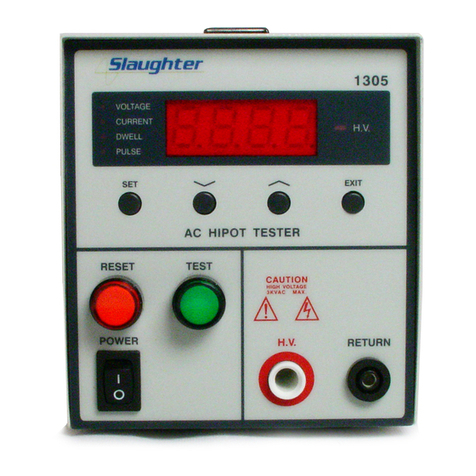
Slaughter
Slaughter 1305 Operation and service manual
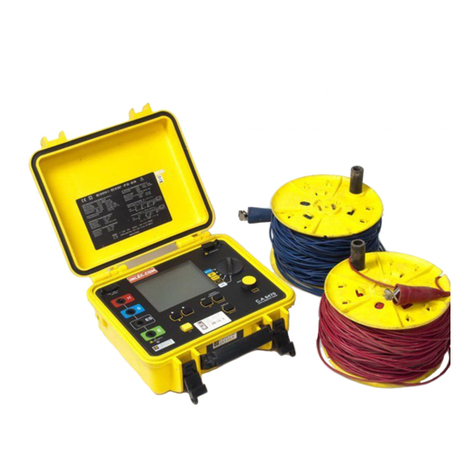
Chauvin Arnoux
Chauvin Arnoux C.A 6470 user manual

Orange Electronic
Orange Electronic OPSS Gen. 2 manual
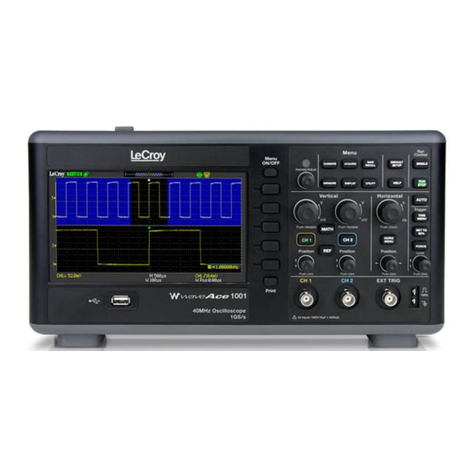
LeCroy
LeCroy WaveAce 1000 series specification
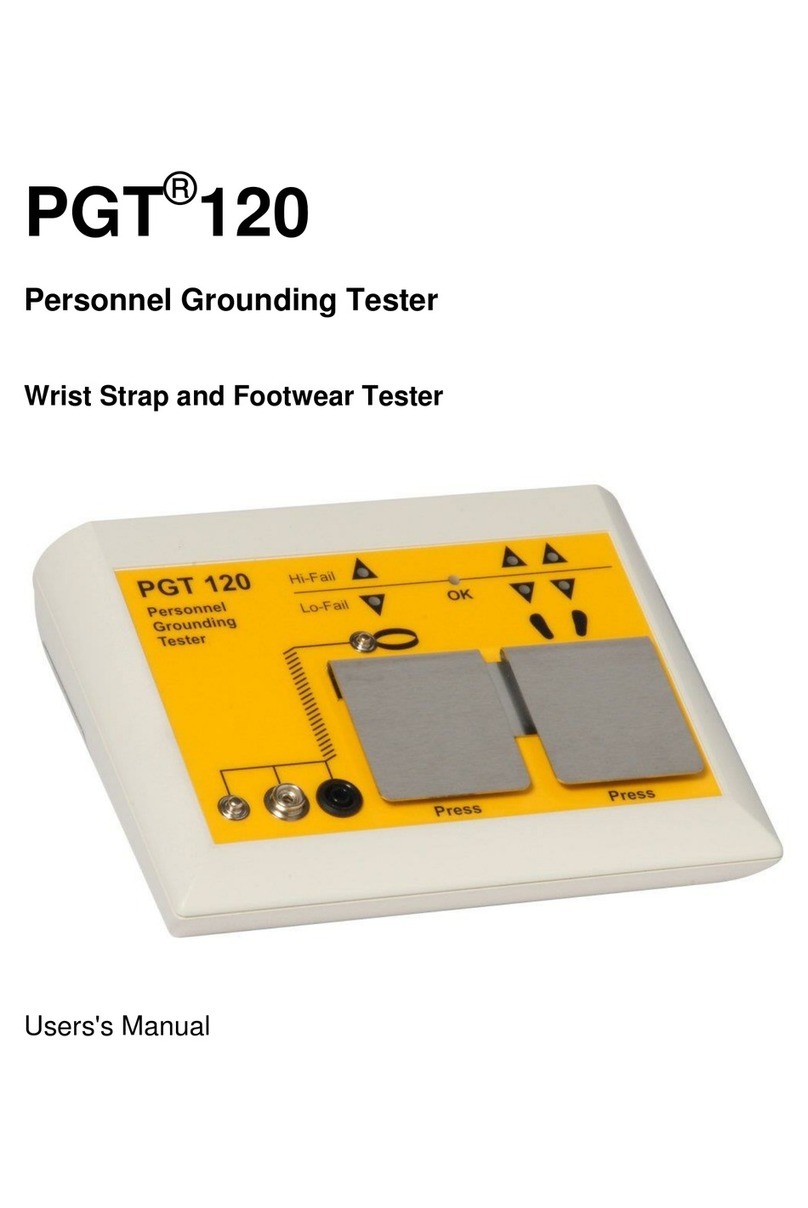
Wolfgang Warmbier
Wolfgang Warmbier PGT 120 user manual
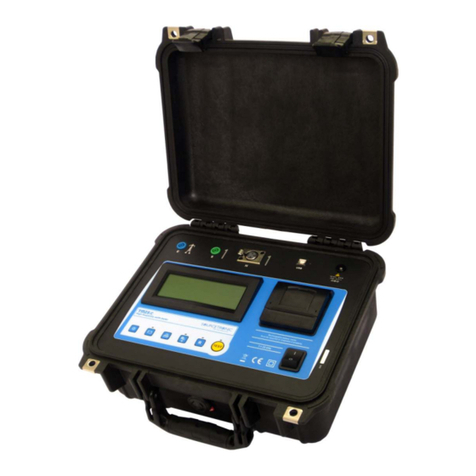
Sourcetronic
Sourcetronic TM-25R user guide
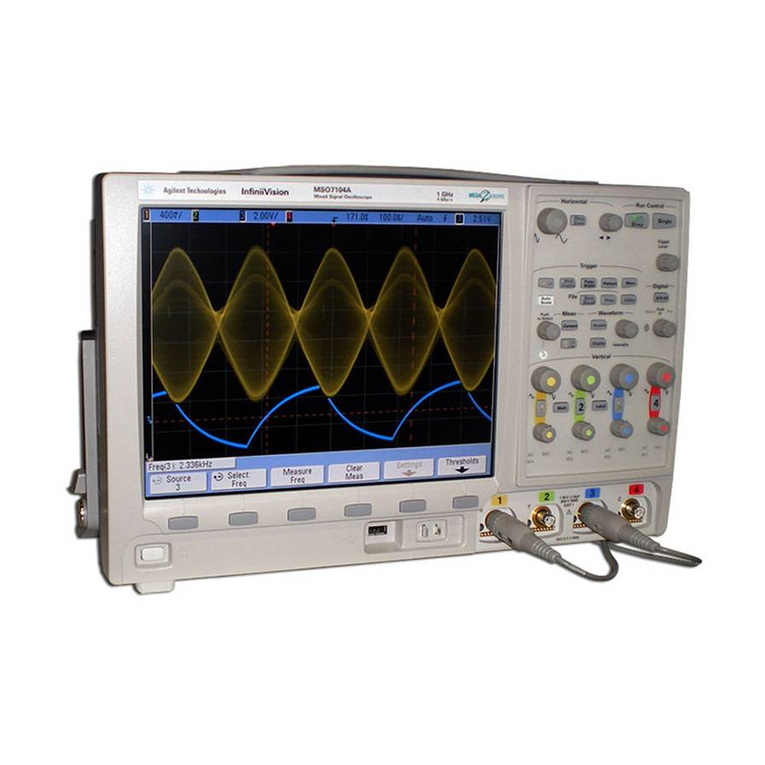
Agilent Technologies
Agilent Technologies InfiniiVision 7000A Series Programmer's guide
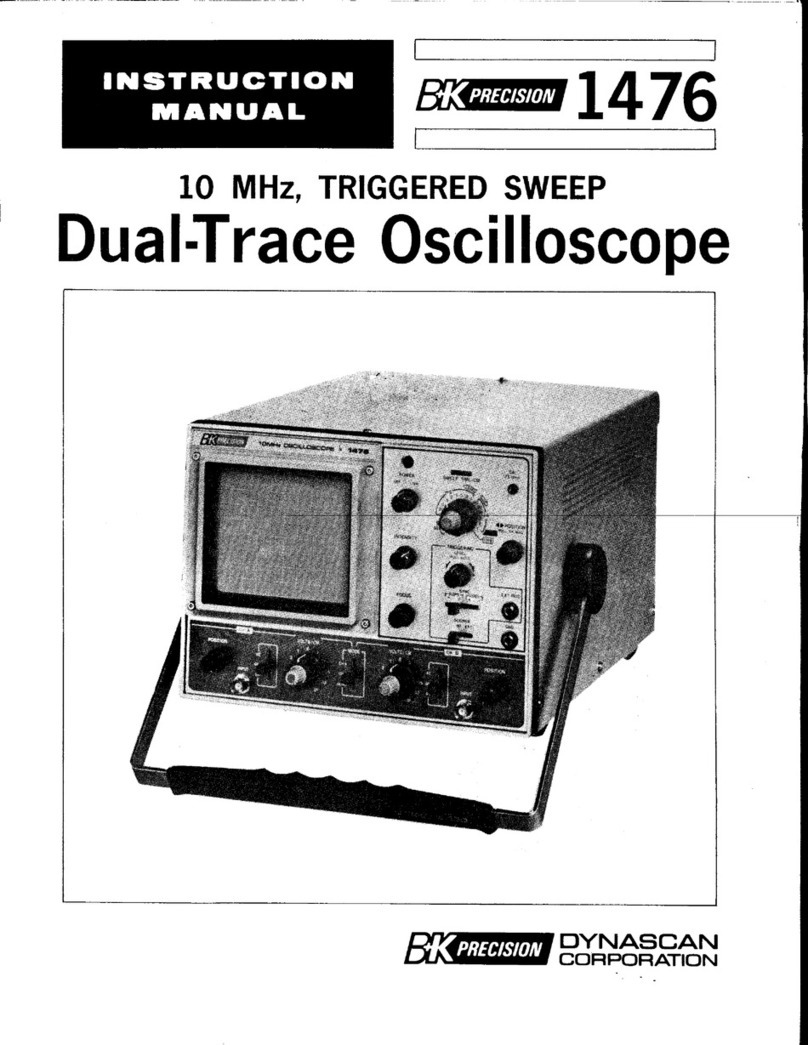
Dynascan Corporation
Dynascan Corporation B+K PRECISION 1476 instruction manual
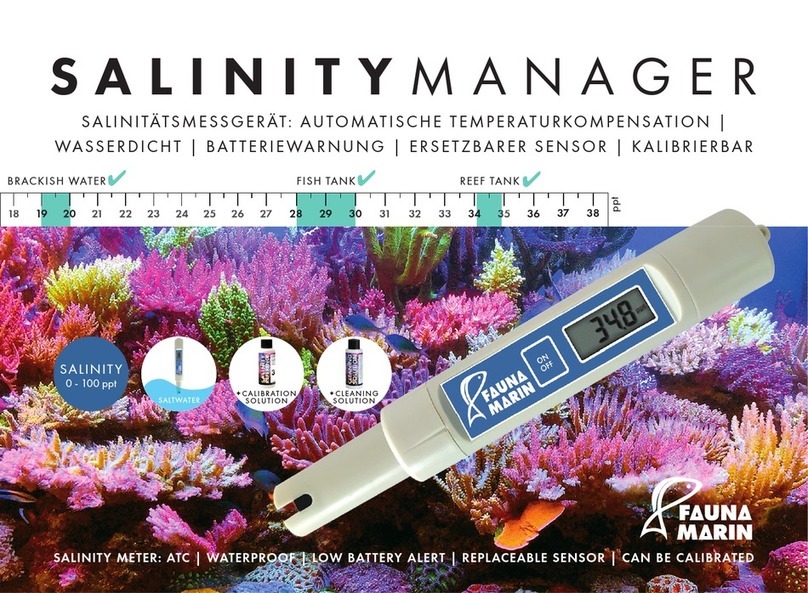
Fauna Marin
Fauna Marin SALINITY MANAGER quick guide
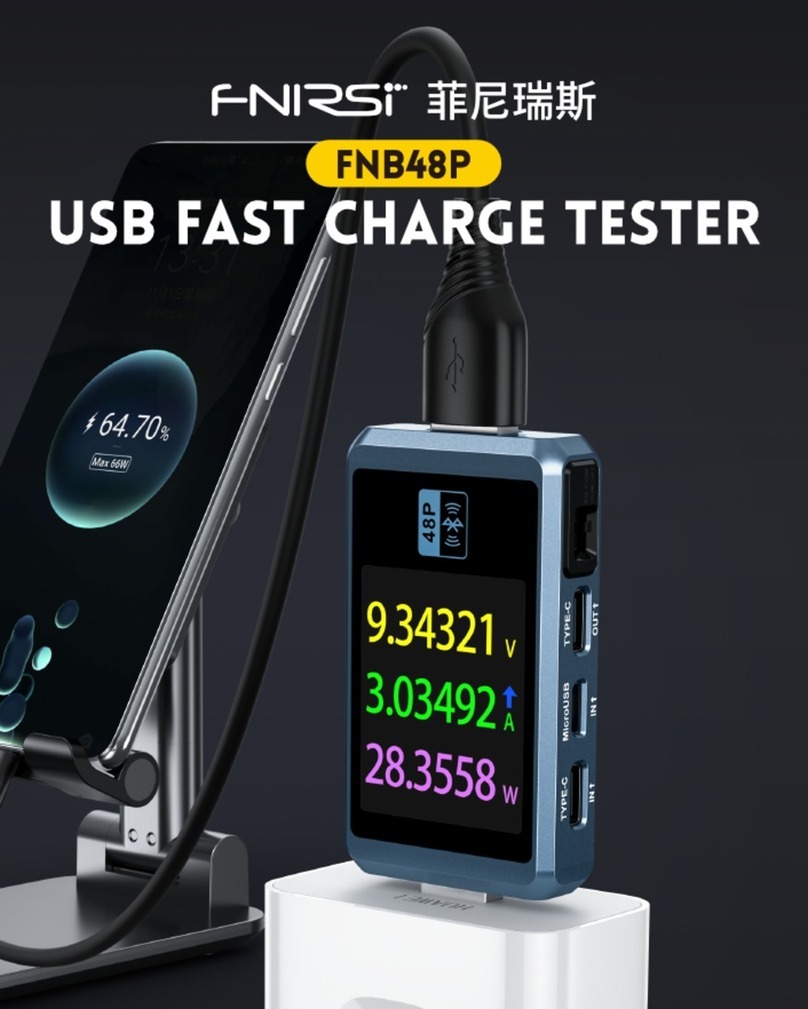
Fnirsi
Fnirsi FNB48P manual
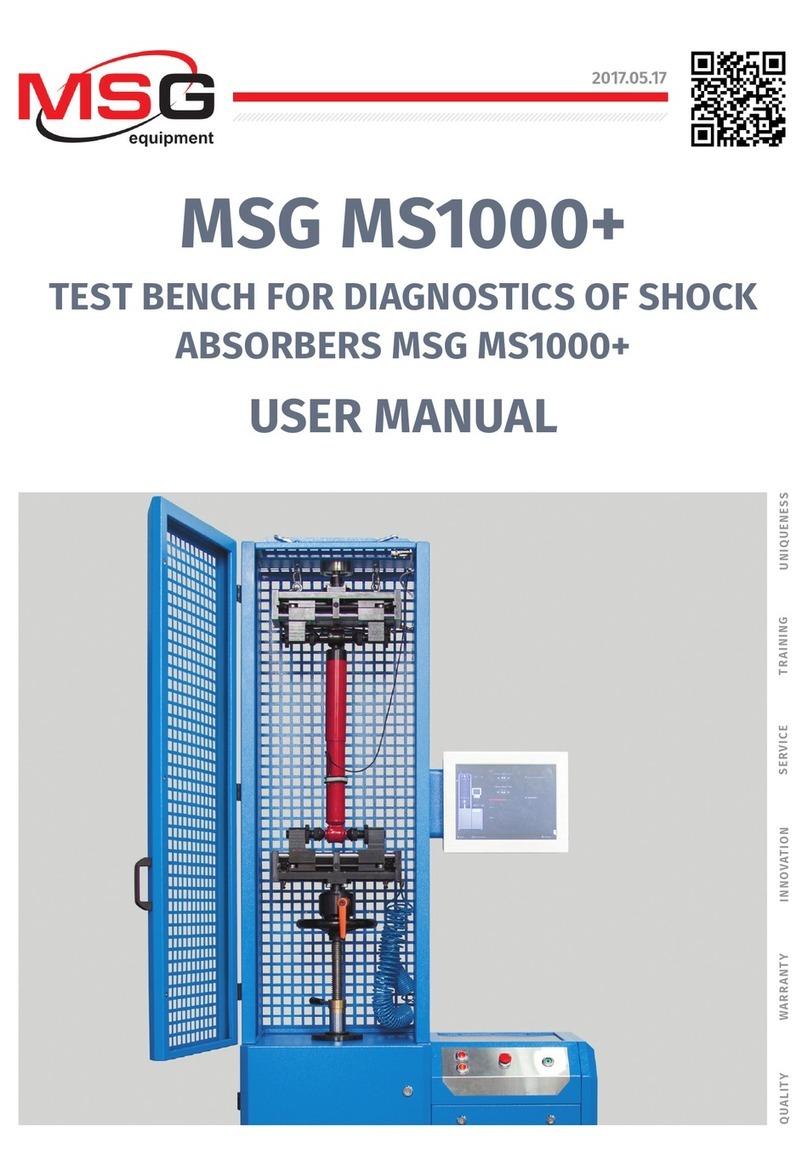
MSG Equipment
MSG Equipment MS1000+ user manual
